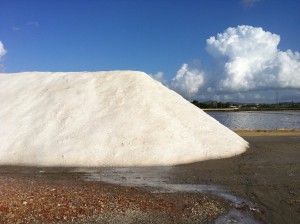 Why does every food writer and recipe I read in the US call for kosher salt? It’s so prevalent I find myself wondering who is behind the big push for Americans to be better cooks by using kosher salt? I was reading the recent NYTimes article “The Single Most Important Ingredient” by Samin Nosrat who wrote “Salt, Fat, Acid, Heat”, and was super excited to hear what she said about salt. Because it truly IS the single most important ingredient you can use! And there it was – she advocated kosher salt. I was crushed.
Why does every food writer and recipe I read in the US call for kosher salt? It’s so prevalent I find myself wondering who is behind the big push for Americans to be better cooks by using kosher salt? I was reading the recent NYTimes article “The Single Most Important Ingredient” by Samin Nosrat who wrote “Salt, Fat, Acid, Heat”, and was super excited to hear what she said about salt. Because it truly IS the single most important ingredient you can use! And there it was – she advocated kosher salt. I was crushed.
Allow me to clarify a few things: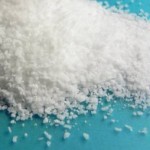
Kosher salt, used exclusively in the US, does not equal whole sea salt. Sea salt is made up of sodium choride (about 85%), as well as dozens of naturally-occurring minerals that help to temper and balance the sodium, both on the palate and in the body. Kosher salt goes through a process that strips all these minerals, denaturing it, leaving 99% sodium to which a chemical is added as an anti-caking agent. It renders a product far inferior to natural, whole sea salt. I call it a “dead salt”.
By the way, it’s called “kosher” because when koshering meat you needed to use a large kernel of salt, not the fine stuff that would melt. So, kosher salt has large kernels, what they call “grosso” in Italian or “gros” in French. 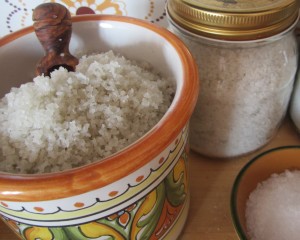
I lived in Italy for 13 years, long enough for my palate to change. After a few years, when I would return to the US for a visit, I was struck by how the addition of kosher salt adds acrid and bitter notes to any dish. The Culinary Institute of America did a study a number of years ago looking for the taste difference that various esoteric and finishing salts bring to food, and to their surprise they found that kosher salt was harsh and bitter, while all the other whole salts were not. I’m on the hunt for that study and will post it as soon as I can get my hands on it.
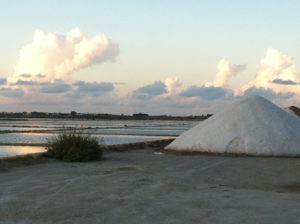 Kosher salt certainly should not be used in trying to reproduce authentic world cuisine, as suggested by the majority of current US food magazines. The Saveur magazine article on arab influences on the Italian island of Sicily I find especially egregious. The article cites a recipe from the city of Trapani on the west coast of Sicily, where they’ve been continuously farming salt since the ancient Phoenicians 5000 years ago, and yet the Saveur recipe calls for kosher salt! Why? Salt from Trapani is a main export from Sicily and it’s available in the US – in grocery stores (Alessi brand), at TJMAXX, Home Goods and Italian specialty shops near you!
Kosher salt certainly should not be used in trying to reproduce authentic world cuisine, as suggested by the majority of current US food magazines. The Saveur magazine article on arab influences on the Italian island of Sicily I find especially egregious. The article cites a recipe from the city of Trapani on the west coast of Sicily, where they’ve been continuously farming salt since the ancient Phoenicians 5000 years ago, and yet the Saveur recipe calls for kosher salt! Why? Salt from Trapani is a main export from Sicily and it’s available in the US – in grocery stores (Alessi brand), at TJMAXX, Home Goods and Italian specialty shops near you!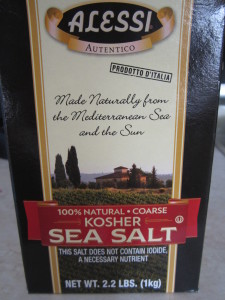
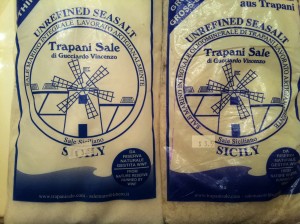
There is farmed whole sea salt available in the US from around the world: France, Spain, Brazil. But even salt mined from a mountain, such as beautiful Himalayan pink salt from the mountains of Pakistan, was once a sea 10-100 million years ago.
Well I for one have had enough and am on a crusade to fight kosher salt and help whole sea salt find its place in America’s kitchen. Join me! You can use your box of kosher salt on the sidewalks next winter! As always, Buon Appetito!





